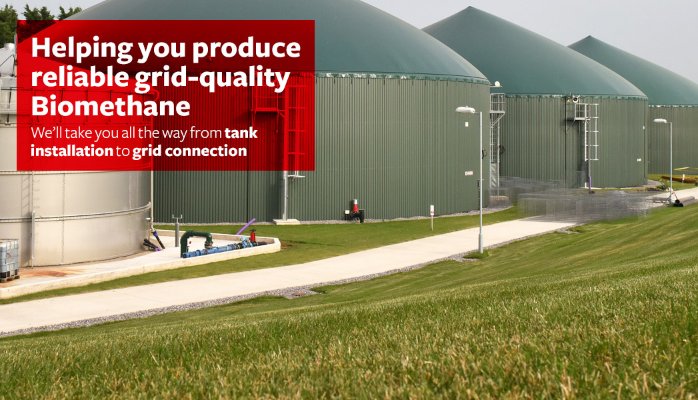|
Wastewater and manure is big business. The waste that enters a domestic wastewater treatment plant contains over three times the amount of energy that is required to filter it from the water. In addition, wastewater treatment plants may provide as much as 12% of the total electricity demands of the United States. As technology advances and the process of fermentation becomes more efficient, industry is slowly shifting towards a renewable energy future with a significantly decreased carbon footprint.
A major challenge to energy capture from fermentation is purification of biogas to biomethane which requires a large investment in infrastructure. However, a few companies have made the investment... A1 Organics is using fermentation in anaerobic digesters to convert food waste and manure in Colorado into renewable fuel in the form of methane gas. If growth stays steady, the company could be processing up to 30 semi-loads of food waste a day! The 91st Avenue Wastewater treatment plant located in Phoenix, Arizona processes over 130 million gallons of wastewater a day. In addition to using the effluent to recharge 450 acres of local wetlands, the city has plans to work with Ameresco, a private company, to develop a stationto capture and purify biogas so that biomethane can be loaded into the Kinder Morgan Pipeline. Generating biomethane from wastewater is expected to net $1.2 million USD per year in local revenue by 2018. The Persigo Wastewater Treatment Plant in Grand Junction Colorado treats about 8 million gallons of wastewater per day. During the wastewater treatment process, fermentation produces biogas which is purified to make biomethane. Grand Junction is the first city in the nation to fuel garbage trucks directly from methane gas produced by the domestic wastewater treatment process. Energy Vision, an environmental group that advocates the use of renewable energy, states that using biogas to operate fleet vehicles in the most effective way to use the energy captured from wastewater treatment. "... if all the organic waste in the country were gathered from dairies, food producers and sewage plants, current technologies could produce enough natural gas to replace about half of the diesel fuel used in the U.S. transportation sector." Watch a clip from PBS Newshour titled: Turning Poop Into Power, Not Pollution
1 Comment
2/3/2022 06:42:27 am
I like what you said the amount of energy necessary to filter waste from water in a household wastewater treatment facility is more than three times that required to filter trash from the water. This is a good article, my uncle is looking for info and this should help him. I wanted to thank you for your explanation about domestic wastewater treatment.
Reply
Leave a Reply. |
Science /ˈsīəns/
|


 RSS Feed
RSS Feed